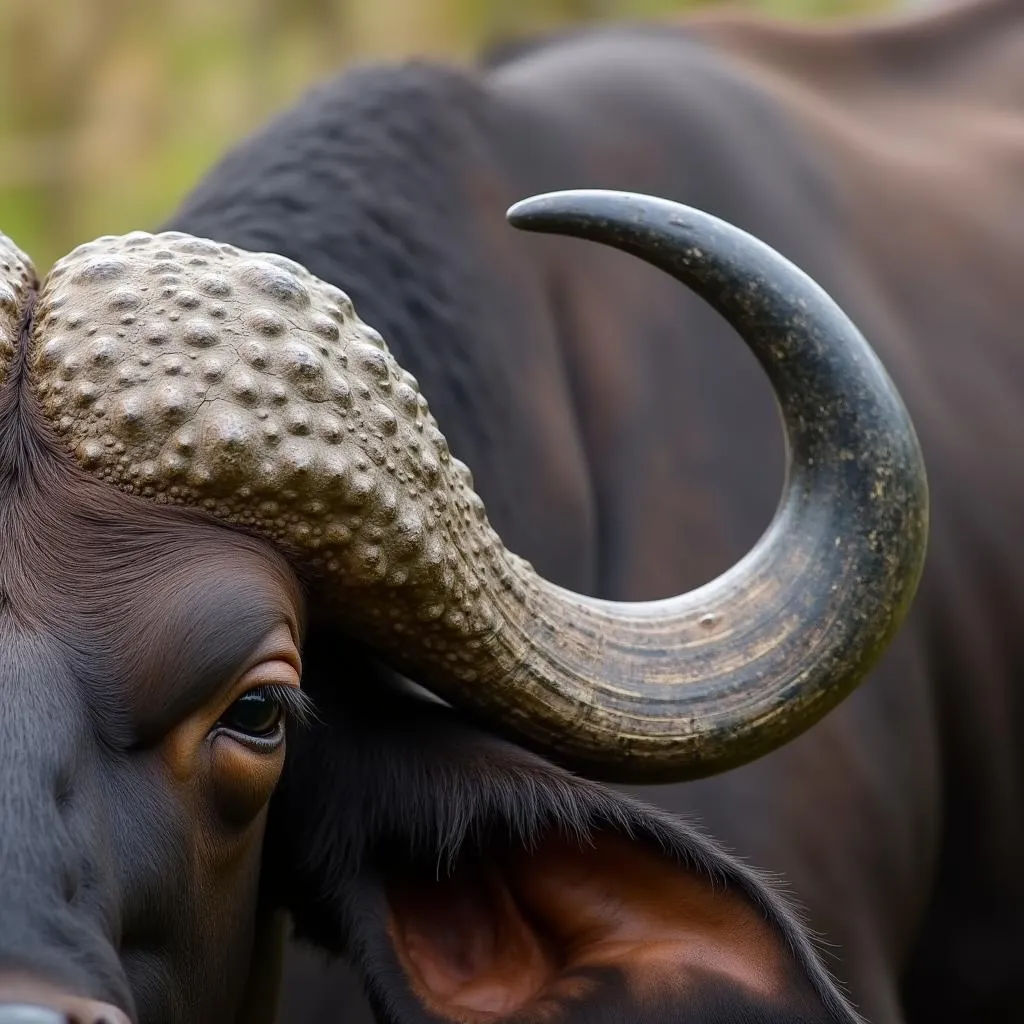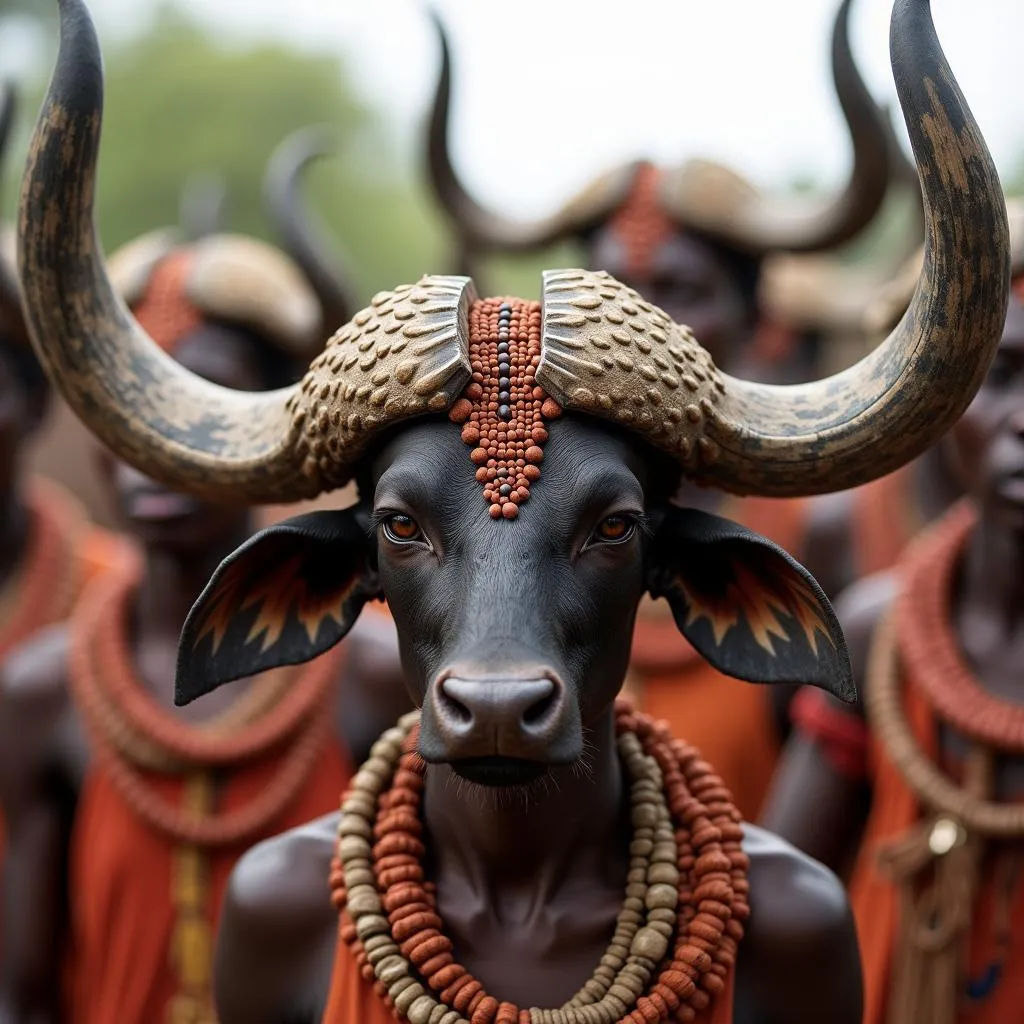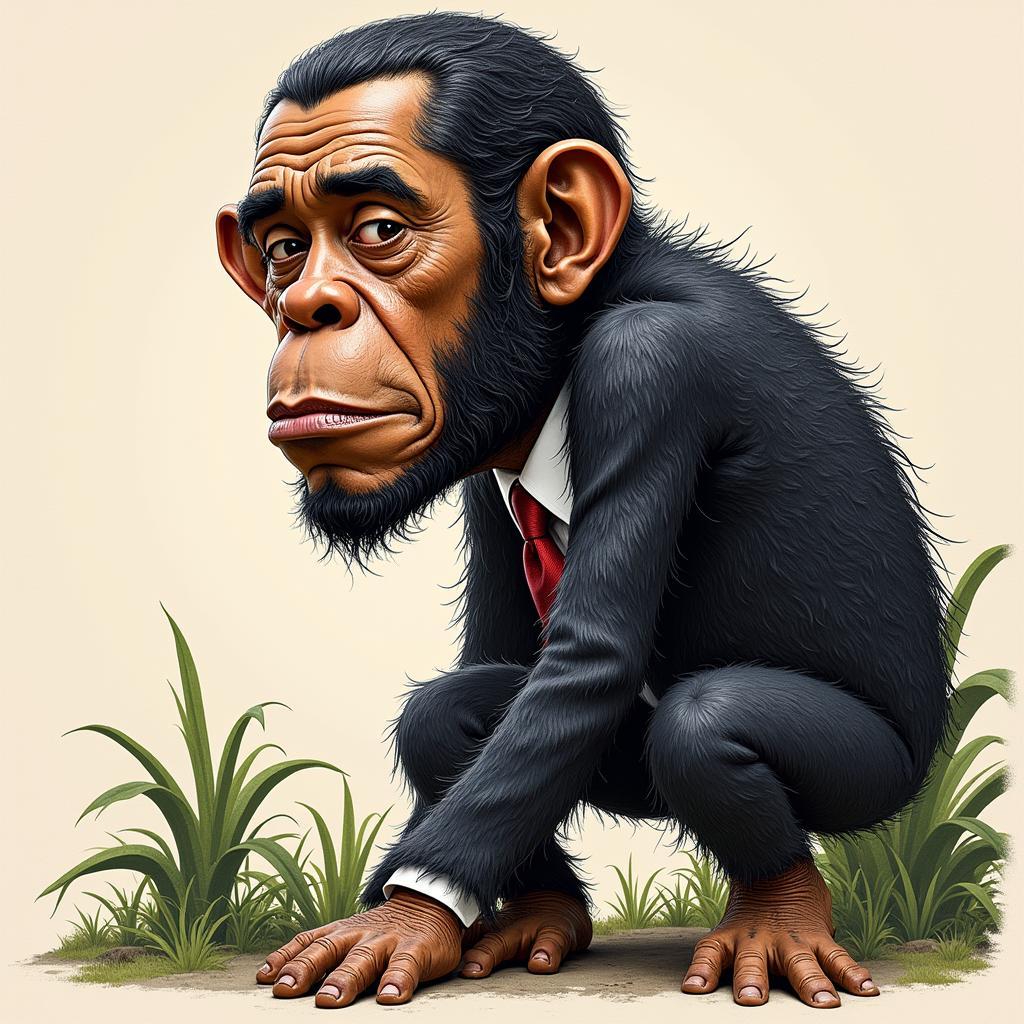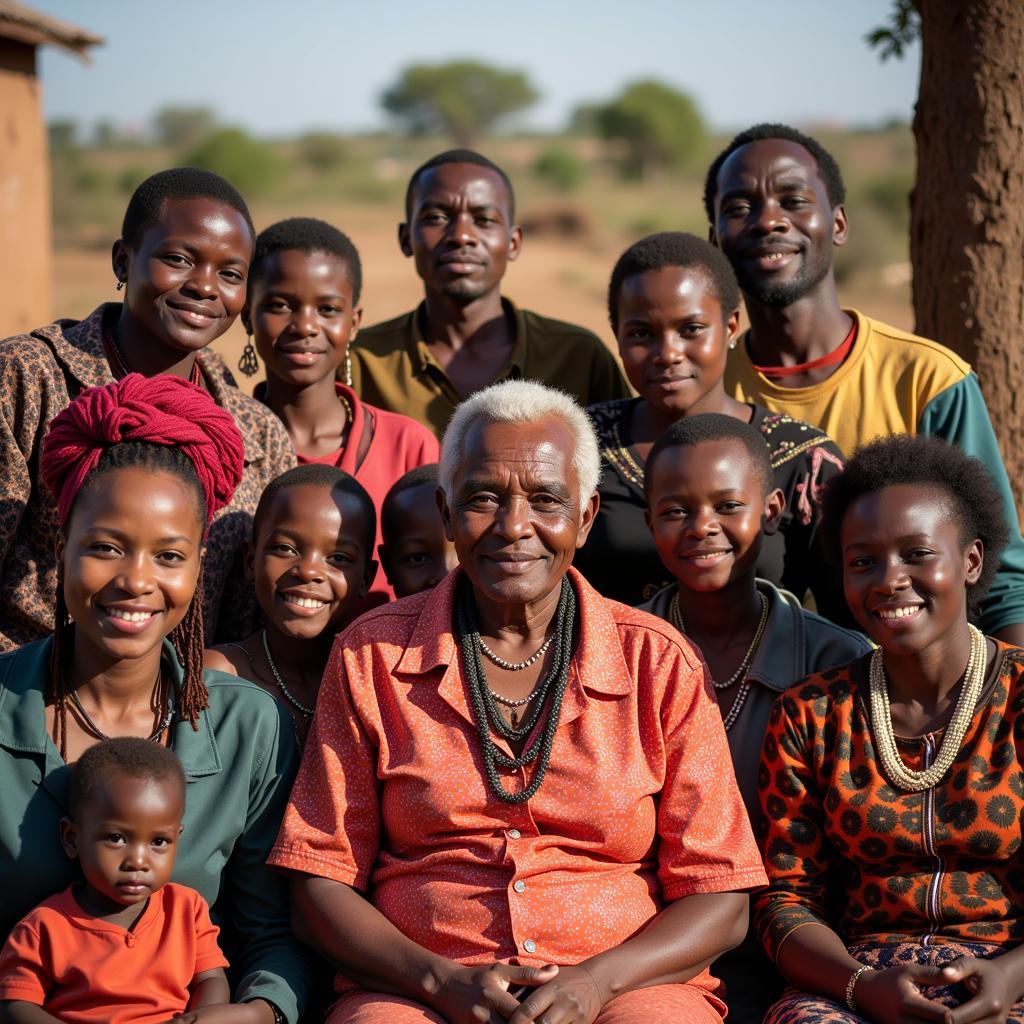Unveiling the Majesty: Understanding African Buffalo Horns
The African buffalo, a creature of immense power and presence on the African savanna, is instantly recognizable by its iconic horns. These impressive structures are far more than mere adornments; they are tools for survival, symbols of status, and fascinating examples of natural engineering. This article delves into the world of African Buffalo Horns, exploring their structure, significance in buffalo society, and the cultural importance they hold for people across Africa.
The Anatomy of Power: African Buffalo Horns Up Close
Unlike the branched antlers of deer, which are shed and regrown annually, African buffalo horns are permanent structures made of keratin – the same material that forms human fingernails and hair.  African buffalo horns close up These horns grow continuously throughout the buffalo’s life, with the rate of growth influenced by factors like age, nutrition, and overall health.
African buffalo horns close up These horns grow continuously throughout the buffalo’s life, with the rate of growth influenced by factors like age, nutrition, and overall health.
The base of each horn forms a massive boss that covers the forehead. This boss serves as a shield, protecting the buffalo’s skull during battles with rivals or predators. As the horns extend outwards and upwards, they curve into a distinctive shape that varies between subspecies and sexes.
A Tale of Two Genders: Deciphering the Differences
Male and female African buffaloes both possess horns, but there are noticeable differences in their size and shape. Males generally have larger, more robust horns with pronounced bosses that almost meet in the center of their forehead. These formidable weapons are essential for establishing dominance within the herd and attracting mates.
Female buffalo horns, while still impressive, are typically smaller and more delicate. Their bosses are less prominent, and the horns curve gracefully outwards rather than forming a large central shield. This difference reflects the distinct roles males and females play in buffalo society.
Beyond Defense: The Multifaceted Roles of Buffalo Horns
While their primary function is defense, African buffalo horns serve a surprising array of purposes:
- Establishing Hierarchy: In the intricate social structure of a buffalo herd, horn size is a key indicator of dominance among males. Fierce battles, where males charge and clash horns, determine the hierarchy within the herd, with the victor gaining access to resources and mating privileges.
- Courtship and Mating: During the breeding season, males use their horns in elaborate displays to attract females. They may spar with rivals, rub their horns against trees, or dig at the ground, showcasing their strength and virility.
- Age Determination: The size and wear patterns on a buffalo’s horns can provide a rough estimate of its age, offering valuable insights into the dynamics of the herd.
- Thermoregulation: Some researchers believe that the blood vessels within the horn’s core may play a role in regulating body temperature, helping the buffaloes cope with the heat of the African savanna.
Cultural Significance: African Buffalo Horns in Human Societies
For centuries, African buffalo horns have held deep cultural and spiritual significance for various ethnic groups across the continent.
- Traditional Medicine: In some cultures, powdered buffalo horn is used in traditional medicine to treat a range of ailments, from headaches to fevers.
- Ceremonial Objects: The impressive size and unique shape of buffalo horns make them ideal materials for crafting ceremonial objects, such as drinking vessels, musical instruments, and decorative items.
- Symbols of Power and Prosperity: The buffalo’s strength and resilience have led to its horns being regarded as symbols of power, prosperity, and good fortune in many African cultures.
 African tribal ceremony incorporating buffalo horns
African tribal ceremony incorporating buffalo horns
Conservation Concerns: Protecting a Majestic Legacy
Despite their resilience, African buffalo populations face various threats, including habitat loss, poaching, and disease. As iconic symbols of Africa’s wildlife, it’s crucial to support conservation efforts that protect these magnificent creatures and ensure the survival of their awe-inspiring horns for generations to come.
FAQs: Delving Deeper into the World of Buffalo Horns
Do African buffalo horns ever stop growing?
While the horns themselves are permanent, their growth rate slows down considerably as the buffalo ages.
Can you tell a buffalo’s age just by looking at its horns?
While horn size and wear patterns provide a general indication, it’s not an entirely accurate method for determining age. Other factors, such as nutrition and environmental conditions, can influence horn growth.
Are African buffalo horns used in any modern products?
Due to conservation concerns and trade restrictions on certain buffalo subspecies, the use of their horns in modern products is limited. However, they may be used in handcrafted items by local artisans in some regions.
Exploring Further: Unraveling More Wonders of the African Buffalo
Want to delve deeper into the captivating world of African buffaloes? Discover more fascinating facts about these incredible creatures:
A Call to Action: Join Us in Protecting Africa’s Wildlife
The African buffalo, with its magnificent horns, stands as a symbol of the continent’s untamed beauty and the importance of conservation. Let us work together to protect these incredible creatures and their natural heritage.
For any inquiries or assistance, please contact us:
Phone: +255768904061
Email: kaka.mag@gmail.com
Address: Mbarali DC Mawindi, Kangaga, Tanzania.
Our dedicated customer support team is available 24/7 to assist you.


